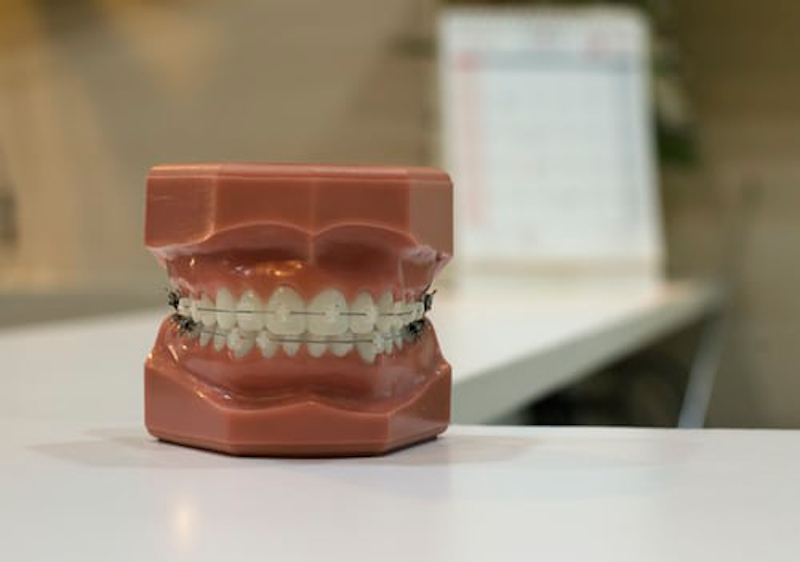Misaligned teeth may not always cause health issues, but having straight teeth may have benefits. Straight teeth may reduce the risk of cavities and gum disease as they are easier to clean, can aid in better digestion and clearer speech, and reduce the chance of headaches from jaw stress. Studies also show teeth can affect first impressions, finding that people with straight teeth are perceived as more successful, intelligent, or have better social lives.
What Is a Crossbite?
A crossbite is a dental malocclusion that affects the way teeth are aligned; it is similar to an underbite, but while an underbite affects all teeth, a crossbite may only affect a single tooth, or group of teeth. A crossbite may occur anteriorly or posteriorly. An anterior crossbite occurs when the front bottom teeth are misaligned and fit over the front top teeth when the mouth is closed or at rest. A posterior crossbite occurs when the bottom teeth in the back of the mouth fit over the top teeth in the back of the mouth when the jaw is closed or at rest.
A clinical review of crossbite in an orthodontic population showed that crossbite malocclusions are not uncommon:
- Almost 30% of patients in the study had at least one tooth in crossbite.
- 66% of patients had an anterior crossbite.
- Almost 20% of patients had a posterior crossbite.
What Causes Crossbite?
Crossbites may arise from dental, skeletal, or circumstantial conditions. Dental and skeletal causes are often passed down through genetics. Families with a history of dental malocclusion are likely to pass these genetic traits to their children.
Some crossbites may form due to circumstantial factors such as the abnormal delay of baby tooth loss or abnormal eruption of permanent teeth. Irregular tooth shed or eruption in primary years may cause the jaw to compensate and develop a crossbite. Other circumstantial factors may include overcrowding of teeth or irregular jaw formation which may be the result of:
- Mouth breathing;
- Tongue placement;
- Prolonged thumbsucking;
- Prolonged use of a bottle;
- Abnormal swallowing.
Does Crossbite Need to Be Corrected?
Not all instances of crossbites may require orthodontic care, but it is important to find an orthodontist in your area and schedule a consultation to be sure. A crossbite might seem cosmetic, but it may reveal an underlying jaw problem that is most easily addressed at a young age while the face and jaw are still forming. Dental malocclusions may result in the jaw shifting to one side to accommodate teeth misalignment, lopsided jaw growth, or the wearing down of tooth enamel from irregular chewing.
Untreated crossbites may also include symptoms such as:
- Jaw or teeth pain from misaligned teeth;
- Head, neck, and shoulder pain from jaw muscle strain;
- Tooth decay from an inability to brush or floss due to tooth shape and position;
- Sleep apnea from lack of oral hygiene;
- Temporomandibular joint disorder (TMJ);
- Speech and sound formation difficulty.
How to Fix a Crossbite
Fixing an overbite or a crossbite may require professional orthodontic care with varied treatments including Invisalign retainers, braces, palate expanders, and orthodontic surgery. There are a few treatment options detailed below.
Invisalign
For mild cases of a crossbite tooth, clear aligners such as Invisalign may be used to shift teeth into their proper position little by little. Invisalign retainers cover the entire surface of the teeth, allowing a tooth in crossbite to move freely without being affected by or affecting opposing teeth.
Braces
A common method of treating a crossbite malocclusion is through the use of braces. Braces are typically used to treat only one tooth in a crossbite. The braces apply pressure on the tooth, slowly moving it into the correct placement. For multiple teeth in crossbite palate expansion may be required in addition to braces.
Palate Expansion
In more severe cases of crossbite malocclusion, palate expansion may be necessary. This may occur with narrow dental arches and width issues in the upper jaw which may cause crowding of the teeth. Palate expanders are often used in tandem with braces to widen the upper jaw and realign the teeth as more space is provided. The palate expander widens the roof of the mouth by applying gradual pressure on the right and left halves of the upper jaw. As the palate expands, new bone is generated in the roof of the mouth creating more space for teeth to shift into place.
Surgery
In the most severe cases of crossbite malocclusion, orthodontic surgery may be required. In orthodontic surgery, the surgeon corrects irregularities or misalignment by moving jawbones into the correct placement. This may result in lengthening, shortening, moving the jaw up or down, or forward or back to accommodate the correct placement and dental structure of teeth. Once correctly placed, bone plates, screws, or wires may be used to secure the jawbones into their new position.
